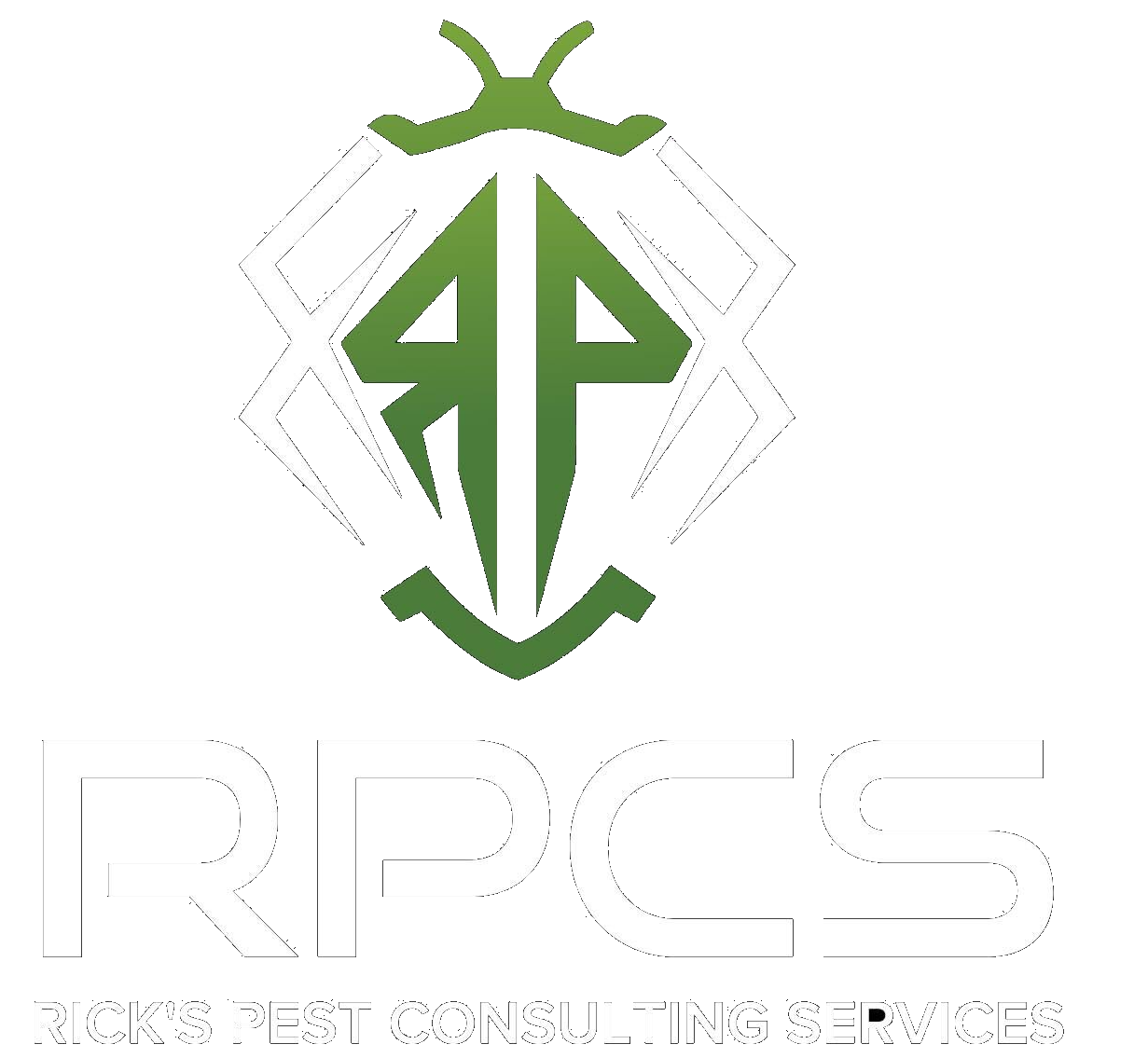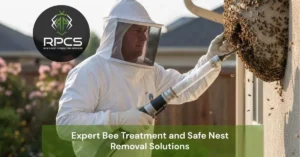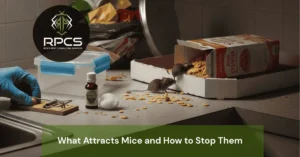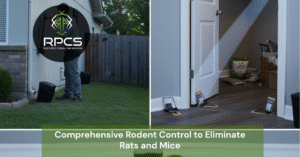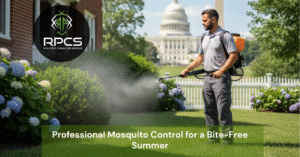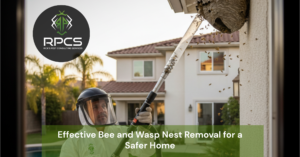Wasps are an important part of the ecosystem, but when they start nesting near homes, decks, or playgrounds, they can quickly become a serious safety concern. In Washington, D.C., where warm, humid summers attract these stinging insects, knowing how to identify different types of wasps can make all the difference in managing an infestation safely.
At Ricks Pest Control Services, we specialize in professional wasp identification and safe removal services throughout the Washington D.C. area. Rather than attempting risky DIY removal, homeowners can rely on our trained technicians to identify the wasp species accurately and implement targeted removal strategies that protect both people and property.
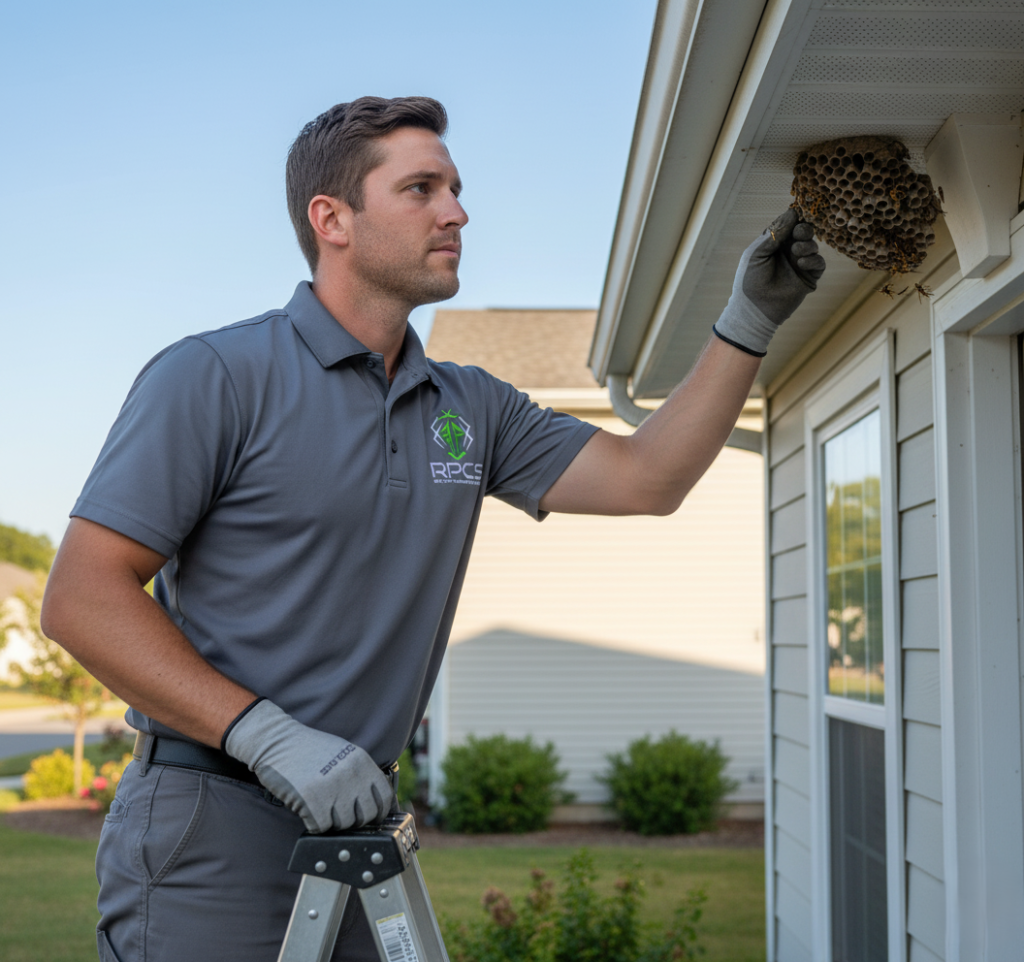
Why Identifying the Wasp Species Matters
Every wasp species behaves differently. Some are aggressive and fiercely defend their nests, while others are more docile but still pose a risk when disturbed. Proper identification helps determine:
- The level of risk to people and pets
- The nesting location and removal method
- Whether preventive measures are needed to stop future infestations
Attempting to spray or destroy a nest without professional knowledge can lead to multiple stings and even allergic reactions. That’s why understanding what type of wasp you’re dealing with is the first step toward a safe and effective solution.
Common Types of Wasps Found
The Washington D.C. region is home to several wasp species. Below are the most common types our technicians encounter, along with identifying traits that distinguish them.
1. Paper Wasps
Appearance:
- Slender bodies with long legs that hang below them when flying
- Brown, reddish, or black with yellow markings
Behavior:
Paper wasps are moderately aggressive and typically build umbrella-shaped nests under eaves, porch ceilings, and attic spaces.
Risk Level:
They’ll defend their nests if threatened, but are less likely to swarm than yellowjackets.
Professional Strategy:
We use controlled, low-toxicity sprays and remove nests during low-activity periods (early morning or dusk) to minimize disturbance.
2. Yellowjackets
Appearance:
- Stocky and bright yellow with black bands
- Often mistaken for bees, but with smoother bodies
Behavior:
Highly aggressive, especially in late summer when colonies are largest. Yellowjackets often build underground nests, though some prefer wall voids or hollow trees.
Risk Level:
One of the most dangerous wasp species is due to their tendency to sting repeatedly.
Professional Strategy:
Our team uses pressurized dust treatments and vacuum extraction to eliminate underground nests without endangering nearby residents.
3. Bald-Faced Hornets
Appearance:
- Black with white markings on the head and thorax
- Larger than most wasps, up to ¾ inch long
Behavior:
These hornets are known for their large aerial nests, often built high in trees or attached to the sides of buildings.
Risk Level:
Extremely territorial and aggressive when threatened, approaching their nest without proper gear is risky.
Professional Strategy:
We use protective suits and telescopic tools to safely neutralize and remove nests from elevated locations without causing structural damage.
4. Mud Daubers
Appearance:
- Long, narrow bodies with metallic blue or black coloring
- Recognizable by their thin “waist”
Behavior:
Solitary wasps that build mud tube nests on walls, under porches, or in sheds. Unlike social wasps, they rarely sting unless provoked.
Risk Level:
Low. They’re more of a nuisance than a threat.
Professional Strategy:
We safely remove the dried mud nests and apply repellent treatments to discourage future nesting in the same spots.
5. Cicada Killers
Appearance:
- Large (up to 2 inches long), black and yellow body
- Often mistaken for giant hornets
Behavior:
These solitary wasps dig burrows in sandy soil and hunt cicadas to feed their larvae.
Risk Level:
Despite their intimidating appearance, cicada killers are generally non-aggressive toward humans.
Professional Strategy:
We identify and treat burrows with eco-friendly soil-safe insecticides, ensuring complete control without harming plants or lawns.
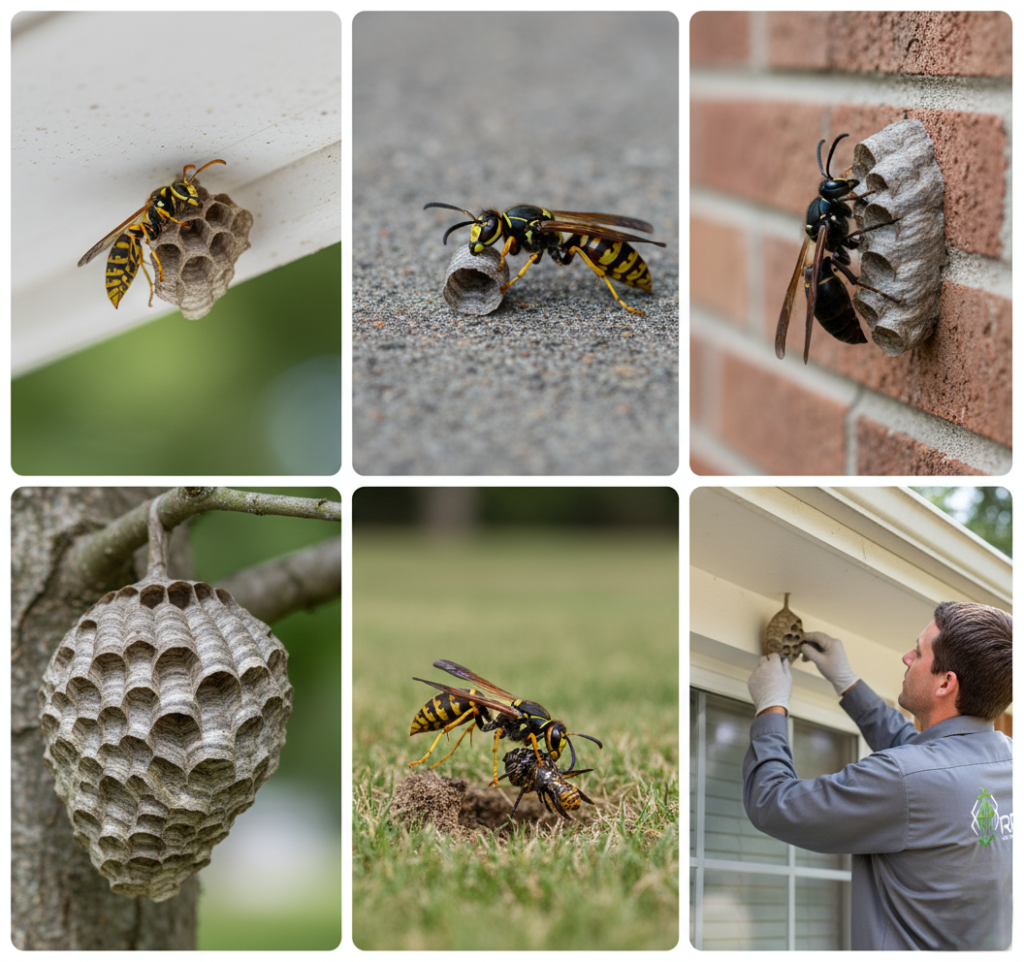
Safe and Professional Wasp Removal Methods
At Ricks Pest Control Services, we never recommend that homeowners attempt to remove a wasp nest themselves. Even a small colony can become defensive and deliver dozens of painful stings within seconds. Instead, our certified pest control specialists follow industry-approved protocols to ensure complete and safe removal.
Here’s how our process works:
- Inspection and Identification:
We start by identifying the wasp species, nest size, and location. This determines the safest removal approach. - Customized Treatment Plan:
We select targeted treatment methods, whether sprays, foams, or dust formulations, designed specifically for the wasp species. - Protective Gear and Safety Measures:
Our team uses protective suits, face shields, and precision equipment to remove nests safely and avoid unnecessary pesticide exposure. - Nest Removal and Site Cleanup:
Once the colony is neutralized, we remove the nest completely and sanitize the area to prevent re-infestation. - Preventive Treatments:
We can apply long-lasting barrier sprays and inspect your property for other potential nesting sites.
Eco-Friendly and Family-Safe Wasp Control
We understand the importance of safety, especially for households with children, pets, or gardens. That’s why our Washington D.C. wasp removal services use eco-conscious and EPA-approved products that eliminate pests without harming beneficial insects like bees or butterflies.
We also focus on habitat modification, sealing small cracks, covering vents, and trimming vegetation, to reduce nesting opportunities naturally.
Signs You May Have a Wasp Problem
If you notice any of the following, it’s time to call a professional pest control expert:
- Increased wasp activity near your home or deck
- Visible paper or mud nests under eaves or trees
- Buzzing or scratching sounds inside the walls
- Wasps are entering small cracks or roof gaps
Ignoring these signs can allow colonies to grow rapidly, especially during late summer when populations peak.
The Dangers of DIY Wasp Removal
It might be tempting to grab a can of store-bought spray, but DIY wasp removal comes with real risks:
- Aggressive swarm behavior triggered by disturbance
- Severe allergic reactions from multiple stings
- Hidden nests inside walls that aren’t visible from the outside
- Incomplete removal, leading to re-infestation
Only trained professionals have the equipment, protective gear, and expertise to safely eliminate wasps and ensure they don’t return.
Why Choose Our Professional Wasp Removal Services
When it comes to wasp control, experience and precision matter. At Ricks Pest Control Services, we combine local expertise with proven pest management techniques to provide homeowners peace of mind.
Here’s what sets us apart:
- Licensed and insured pest control technicians
- Eco-friendly, low-toxicity products
- Fast response times across the Washington D.C. metro area
- Long-term prevention plans tailored to your property
- Transparent pricing with no hidden fees
Call to Action
Don’t wait until a buzzing nest becomes a neighborhood hazard. At Ricks Pest Control Services, we offer professional, safe, and eco-conscious wasp removal in Washington D.C. Our team is equipped to identify the exact species, remove nests efficiently, and prevent future infestations, all while keeping your family safe.
Call us today or book an inspection online to enjoy a wasp-free home and peace of mind all summer long.
